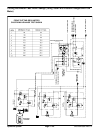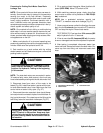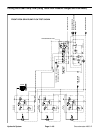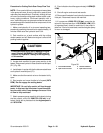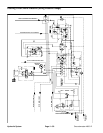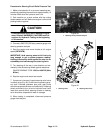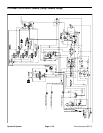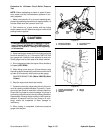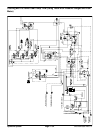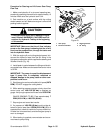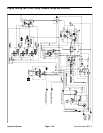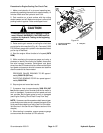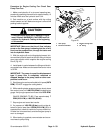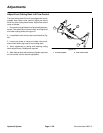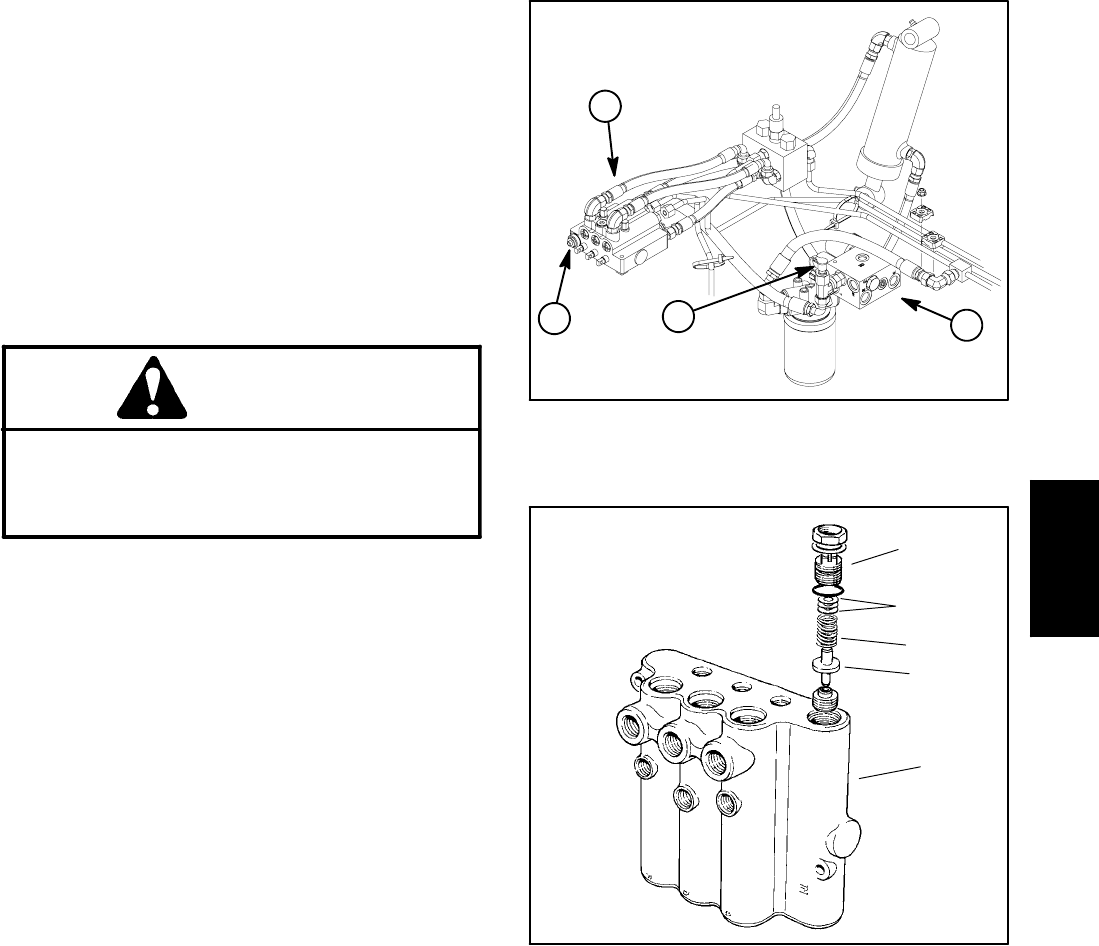
Groundsmaster 4000--D Hydraulic SystemPage 4 -- 53
Procedure for Lift/Lower Circuit Relief Pressure
Test
NOTE: Before attempting to check or adjust lift pres-
sure, make sure that counterbalance pressure is cor-
rectly adjusted.
1. Make sure hydraulic oil is at normal operating tem-
perature by operating the machine for approximately 10
minutes. Make sure the hydraulic tank is full.
2. Park machine on a level surface with the cutting
decks lowered and off. Make sure engine is off and the
parking brake is applied.
CAUTION
Prevent personal injury and/or damage to equip-
ment. Read all WARNINGS, CAUTIONS and Pre-
cautions for Hydraulic Testing at the beginning
of this section.
3. Raise seat to gain access to lift circuit test port at the
fan drive manifold (Fig. 41). Connect a 5,000 PSI (345
bar) gauge with hydraulic hose attached to test port.
Route gauge hose to allow seat to be safely lowered.
4. Sit on the seat and start the engine. Move throttle to
full speed (2870 RPM).
5. While sitting on the seat, pull lift lever back to raise
the cutting decks. Momentarily hold the lever with the lift
cylinder at full extension while looking at the gauge.
GAUGE READING TO BE 1500 to 1600 PSI (104 to
110 bar).
6. Stop the engine and record test results.
7. If pressure is too high, adjustrelief valve in lift control
valve by rotating counterclockwise (Figure 42). If pres-
sure is too low, check for restriction in pump intake line.
Check the lift cylinder for internal leakage. If cylinder is
not leaking, adjust the relief valve by rotating clockwise.
Repeat steps 4 through 6 after making a relief valve ad-
justment. If pressure is still too low, pump or lift cylin-
der(s) should be suspected of wear, damage or
inefficiency.
8. When testing is completed, disconnect pressure
gauge from test port.
1. Fan drive manifold
2. Lift circuit test port
3. Lift control valve
4. Relief valve
Figure 41
1
2
3
4
1. Control valve assembly
2. Relief valve assembly
3. Washers
4. Spring
5. Poppet
Figure 42
2
3
1
4
5
Hydraulic
System




